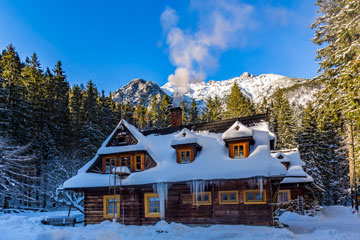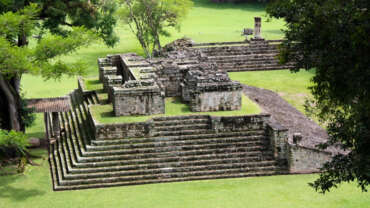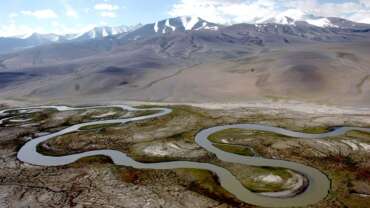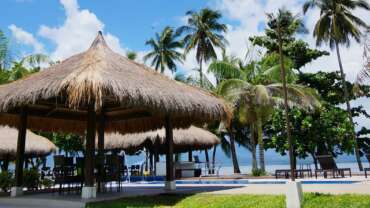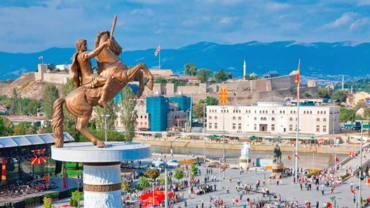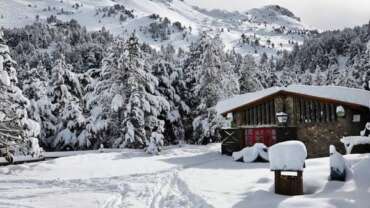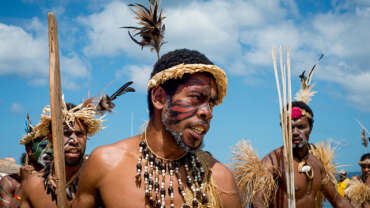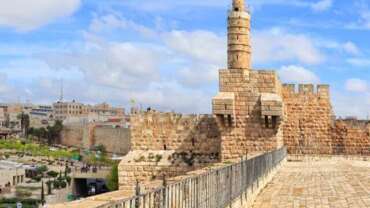Poland - Move Your Imagination
A country in the Central Europe, Poland is bordered by Lithuania, the Baltic Sea and Kaliningrad Oblast to the north, Ukraine, and Belarus to the east, Germany to the west and the Czech Republic and Slovakia to the south. Officially recognized as the Republic of Poland, having a population of over 38.5 million people it is the 8th most populous the 9th largest country in Europe.
Leading the top tourists attractions, the old town of Krakow is a UNESCO World Heritage Site, with many buildings dating back hundreds of years, including the major sites- St. Mary’s Basilica, Cloth Hall on the main town square, and Wawel Castle up on the hill. Situated on the outskirts of Krakow, the Wieliczka Salt Mine is an underground city all craved out of rock salt. While High-tech museums are a rage in Poland, the capital-Warsaw posses arguably the best of the lot, and the Warsaw Uprising Museum has been wowing visitors with its engrossing array of sound, light, and video portraying the tragic Warsaw Uprising of 1944. Located on the Baltic coast, the city of Gdansk is known for its architecture. It’s star attraction is St. Mary’s Church which is the largest brick Gothic church in the world.
While trying the traditional Polish cuisine, stop counting your calories. High in fats and mostly includes meat and spices. Meals are heavy and strong, ideal for cold European winters. Ingredients mostly used are beetroot, sauerkraut, cucumbers (gherkins), mushrooms, kohlrabi, sausages and smoked sausage. A true touristic ‘must eat’ includes Bigos- meat stew that contains white cabbage, kotlet schabowy is a pork cutlet coated with breadcrumbs dished up with potatoes and vegetables and Golabki is a knob of forcemeat wrapped up in a white cabbage leaf.
History of Poland
The Piast monarchy
The early state
The terms Poland and Poles appear for the first time in medieval chronicles of the late 10th century. The land that the Poles, a West Slavic people, came to inhabit was covered by forests with small areas under cultivation where clans grouped themselves into numerous tribes. The dukes (dux) were originally the commanders of an armed retinue (drużyna) with which they broke the authority of the chieftains of the clans, thus transforming the original tribal organization into a territorial unit. Two tribes, the Polanie—based around the fortified settlement (castrum) of Gniezno—and the Wiślanie—who lived near Kraków—expanded to bring other tribes under their control.
Exposed to some missionary activities linked with St. Methodius, the state of Wiślanie fell under the rule of Great Moravia—which was destroyed by the Magyar invasion of the early 10th century—and came eventually under the rule of Mieszko I, the first ruler of the Polanie to be mentioned in written records. He is regarded as the founder of the Piast dynasty, the beginnings of which are clouded in legend, though the names of three of his predecessors are known. Creating what a contemporary Spanish-Jewish traveler, Ibrāhīm ibn Yaʾḳūb, described as the most powerful of the existing Slav states, Mieszko accepted Roman Catholicism via Bohemia in 966. A missionary bishopric directly dependent on the papacy was established in Poznań. This was the true beginning of Polish history, for Christianity was a carrier of Western civilization with which Poland was henceforth associated.
Facing the crucial problem of Poland’s relationship to the two pillars of medieval Christendom, the Germanic Holy Roman Empire and the papacy, Mieszko battled the expansive tendencies of the former—a record that dates from 963 refers to a struggle with the German dukes—while he sought reliance on Rome, to which he subordinated his state in a curious document, the Dagome iudex (c. 991). Poland alternately competed and cooperated with neighbouring Bohemia and Hungary as well as with the principality of Kievan Rus. At Mieszko’s death the Polish state stretched from the Baltic Sea to the Carpathian Mountains, resembling in shape post-World War II Poland.
Because the principle of primogeniture was unknown in the country, every succession led to internal strife. Mieszko’s successor was Bolesław I (the Brave). Commanding a huge military force, he sought hegemony in east-central Europe. In 1000 he received the Holy Roman Emperor Otto III, who dreamed of restoring a universal Roman empire and who recognized the sovereign status of the Polish duke. Moreover, Otto agreed to an independent Polish ecclesiastical organization that added an archbishopric in Gniezno and bishoprics in Kraków, Wrocław, and Kołobrzeg to the already extant bishopric in Poznań. Given the role of the church in medieval statehood, this was a great achievement. Paying their respects to St. Adalbert (Vojtěch)—the former bishop of Prague slain by the pagan Prussians and later elevated to sainthood—the two rulers sought to coordinate their missionary activities in the pagan Slav lands between the Elbe and Oder rivers. This area, home of the so-called Polabian Slavs, formed a kind of buffer between the two states and was the object of their respective expansion.
The successors of Otto pursued German objectives rather than imperial mirages and struggled with Bolesław, who briefly occupied Bohemia and intervened in Kievan Rus. Polish-German strife continued intermittently until 1018. In 1025 Bolesław assumed the royal crown, which made him the equal of the other monarchs of Europe.
Collapse and restoration
The virtual collapse of the state under Bolesław’s son Mieszko II, who was even obliged to renounce his kingly status, showed how much the political fortunes of a state were bound to the personality of its ruler. Mieszko’s successor, Casimir I, had to flee the country, which was torn by internal strife. A pagan reaction against Christianity combined with revolt against fiscal and administrative burdens to bring about a popular uprising. Casimir had to be restored by the emperor, Conrad II, who wished to preserve a balance of power in the region. Known later as “the Restorer,” Casimir eventually succeeded in bringing under his sway most of the Polish lands, reviving the ecclesiastical organization, and making Kraków his capital instead of Gniezno or Poznań, which had been devastated by the Czechs.
Casimir’s son and successor, Bolesław II (the Bold), sought to revive the great power designs of the first Bolesław. Skillfully exploiting the great Investiture Controversy between the empire and the papacy that affected most of Europe, Bolesław II sided with Rome and gained the royal crown in 1076. Bolesław was later drawn into a conflict with Stanislaus (Stanisław), the bishop of Kraków, whom the king ordered killed in 1079 under circumstances still debated by historians. Bolesław then fled to Hungary, where he died. The cult of St. Stanislaus, who was canonized in 1253, became widespread in Poland and was invoked to defend the freedom of religion against the state and ethics against power.
Under Bolesław’s brother and successor, Władysław I Herman, claims to the royal crown and a more ambitious foreign policy were abandoned. Efforts by the palatine, Sieciech, to maintain centralized power clashed with the ambitions of the rising magnate class. Following a period of internal conflict, Bolesław III (the Wry-Mouthed) emerged as the sole ruler (reigned 1102–38). Promoting Christianity, he expanded his influence over Western Pomerania, whose towns and harbours, such as Wolin, Kołobrzeg, and Szczecin, were already important centres of trade and crafts. Eastern, or Gdańsk, Pomerania came under direct Polish administration. After an invasion by Emperor Henry V was repelled, peace prevailed with the empire, and Bohemia renounced its claims to Silesia.
The period of divisions
Collapse of Bolesław’s governing system
The awareness of centrifugal trends and external dangers led Bolesław III to establish in his testament of 1138 a system meant to ensure greater stability. He divided the state among his sons; the oldest became the senior duke, whose domain included the capital in Kraków and who had general powers over military, foreign, and ecclesiastical matters. By the early 13th century, however, the efforts of the grand duke to exert real controls had come to naught. The entire system was characterized by disputes, subdivisions, and fratricidal strife into which the neighbouring powers were frequently drawn.
During the period of divisions, lasting almost 200 years (until the rule of Casimir III), Poland underwent transformation in almost every sphere of life. The centrally controlled early Piast monarchy had been based on a system of fortified settlements from which an official called the castellan tended to the ruler’s domain and acted as administrator, military commander, judge, and tax collector. Around some settlements there arose so-called service villages, in which artisans produced objects needed by the dukes and their retinues. The emerging social pyramid positioned the duke and his officials and leading warriors on top, with various categories of freemen, part-freemen, and slaves at the bottom. Between the 10th and the 12th century, this system slowly began to break down. Improved cultivation methods (notably the three-field system) enhanced the value of the land with which the ruler endowed the church and compensated his nobles, warriors, and officials. Estates cultivated by a semiserf population grew significantly. The old drużyna changed into a smaller personal guard, the armed force being composed of nobles performing military service as landholders.
Cultural developments, 11th–13th century
The church was the principal proponent of learning and art. Romanesque and then Gothic architecture made their way into Poland. Religious orders such as the Benedictines arrived in the 11th century, the Cistercians in the 12th century, and the Dominicans and the first nuns in the 13th century. Cathedral and, later, parish schools appeared. During this time the earliest historical chronicles appeared. The first was compiled in the early 12th century by a Benedictine monk known as Gallus Anonymous. The second was completed by Wincenty Kadłubek at the beginning of the 13th century.
Social and economic developments
The 13th century marked a turning point in the history of medieval Poland. The agricultural boom was accompanied by the development of salt mining in Little Poland and of silver and gold mining in Silesia. The Polish lands were brought more fully into the European economy, participating in the west-east trade as well as in that of the Baltic region in the north and that along the Danube River in the south. The growth of large landed estates was partly the cause and partly the consequence of surplus production that could be sold on the market. It became profitable to have free tenant farmers, rather than serfs, cultivate the land, which attracted large groups of settlers from as far away as the Rhineland and the Low Countries. Demographic trends in western Europe facilitated this “colonization.” The settlers—assured of personal freedom, fixed rents, and some measure of self-administration and operating under the so-called German Law—founded new villages and towns or reorganized old ones. Towns received formal charters (Wrocław in 1242, Poznań in 1253, Kraków in 1257) that provided for autonomy and self-government modeled on that of the German city of Magdeburg—hence the term Magdeburg Law.
Although the burgher population became largely German or German-speaking, the extent of settlement by Germans was restricted except in Silesia and Pomerania. Otherwise, most of the countryside remained Polish. Another alien group, however, began to play an important role in the country’s economy—namely, the Jews escaping persecution in the west. Bolesław V (the Chaste) of Great Poland granted to the Jews the Kalisz Privilege (1264), which provided personal freedom, some legal autonomy, and safeguards against forcible baptism.
Feudalism
Economic and social transformation led to some forms of feudalism and organization of estates. A system in which the entire state structure was based on contractual personal arrangements between superiors and inferiors (lords and vassals)—with land (fiefs) being the traditional means of reward for services—did not really prevail in Poland. Nor did a typical feudal pyramid exist. Nevertheless, vassalage of sorts and customs of chivalry and knighthood developed. In view of the weakening of the rulers, the landowners, both ecclesiastical (the church in the 12th century) and lay (the nobility in the 13th century), succeeded in obtaining so-called immunities—i.e., exemptions for their estates from taxes, services, and the legal jurisdiction of the state.
During that period the church functioned as the only structure that transcended the divisions. Although the Silesian duchies gravitated toward Germany, the archbishopric of Gniezno continued to include the diocese of Wrocław. Several archbishops were active proponents of reunification of Poland, notably Jakób Świnka. The concepts of Corona Regni Poloniae, as divorced from the actual ruler, and of gens polonica—an early form of nationalism that identified the state with the Polish people and implied its indivisibility—began to make their appearance.
The arrival of the Teutonic Knights
The chances of reunification were dim, as the various branches of the Piast dynasty pursued their vested interests and further subdivided their lands. Western Pomerania, with its native dynasty, and Eastern Pomerania were already largely severed from Poland and threatened by the aggressive and expansive margravate of Brandenburg. In the north the pagan Lithuanians, Prussians, and Jatvingians were harassing Mazovia. In 1226 Conrad of Mazovia called in the German crusading order, generally known as the Teutonic Order, provided them with a territorial base, and assumed that after a joint conquest of the Prussian lands (later known as East Prussia) they would become his vassals. The Teutonic Knights, however, tacitly secured imperial and papal recognition and forged Conrad’s acquiescence to their independent status. After a series of ruthless campaigns, Prussia was conquered and resettled by Germans—the old Prussian population having been virtually wiped out. It became a powerful state of the Teutonic Knights. While German historians have traditionally stressed the civilizing and organizational achievements of the Knights, the Poles have emphasized their ruthlessness and aggressiveness. The arrival of the Teutonic Knights changed the balance of forces in that part of Europe and marked the beginning of the rise of Prussia as a great power.
In 1241 Little Poland and Silesia experienced a disastrous Mongol (Tatar) invasion. The duke of Silesia, Henry II (the Pious), who had been gathering forces to reunite Poland, perished in the Battle of Legnica (Liegnitz) in 1241, and the devastation wrought by the Mongols may have contributed to the above-mentioned colonization.
Revival of the kingdom
The Czech dynasty
In the late 13th century, Bohemia emerged as the leading country in east-central Europe, and King Otakar II (Přemysl Otakar II) even tried to gain the imperial crown. His son Wenceslas II profited from the chaos prevailing in the Polish duchies—a bid for unification by Przemysł II of Great Poland (crowned king in 1295) was cut short by his assassination—to become king of Poland in 1300. Establishing an administration based on provincial royal officials (starosta)—a permanent feature of Polish administration in the centuries to come—he temporarily pacified the country. Wenceslas’s grandiose plans to rule all of east-central Europe ended with his death in 1305, which was followed a year later by the assassination of his son Wenceslas III. This meant the end of the native Czech Přemyslid dynasty, and John of Luxembourg claimed the thrones of Bohemia and Poland. His pursuit of the latter was opposed by one of the minor dukes, Władysław the Short, who had earlier battled the two Wenceslases and their supporters. Allying himself with the new king of Hungary, Charles I, Władysław withstood the enmity of Bohemia, the Teutonic Knights, rival Polish dukes, and the mainly German patriciate of Kraków. At one point the struggle assumed the character of a Polish-German national conflict.
People of Poland
Ethnic groups
Before World War II the Polish lands were noted for the richness and variety of their ethnic communities. The traditional provinces of Silesia and Pomerania were home to a significant minority of Germans. In the southeast, Ukrainian settlements predominated in the regions east of Chełm and in the Carpathian Mountains east of Nowy Sącz. In all the towns and cities, there were large concentrations of Yiddish-speaking Jews. The Polish ethnographic area stretched eastward: in Lithuania, Belarus, and western Ukraine, all of which had a mixed population, Poles predominated not only in the cities but also in numerous rural districts. There were significant Polish minorities in Daugavpils (in Latvia), Minsk (in Belarus), and Kiev (in Ukraine).
The war, however, killed vast numbers of people, precipitated massive migrations, and radically altered borders. As a consequence, the population of Poland became one of the most ethnically homogeneous in the world. In addition, minority ethnic identity was not cultivated publicly until after the collapse of communism in 1989. Virtually all of Poland’s people claim Polish nationality, with Polish as their native tongue. Now, in the 21st century, most communities of non-Poles are dispersed but reside in the border provinces, primarily in the south. Ukrainians are scattered in various southwestern and northern districts. Belarusians and Lithuanians live in areas adjoining Belarus and Lithuania, respectively. In Silesia a significant segment of the population tends to declare itself as Silesian or German according to political circumstances. Kashubians live west of Gdańsk near the Baltic Sea. Situated in the southeast are communities of Roma (Gypsy), in Małopolskie województwo (province), and Ruthenians, in Podkarpackie province. The Jewish community, now almost entirely Polonized, has been greatly reduced and can be found in major cities. There are small numbers of Slovaks, Czechs, and Armenians. Conversely, there is a large Polish diaspora, notably in the United States.
Languages
The country’s official language, Polish (together with other Lekhitic languages and Czech, Slovak, and Upper and Lower Sorbian), belongs to the West Slavic branch of Slavic languages. It has several dialects that correspond in the main to the old tribal divisions; the most significant of these (in terms of numbers of speakers) are Great Polish (spoken in the northwest), Little Polish (spoken in the southeast), Mazovian, and Silesian (Śleżanie). Mazovian shares some features with Kashubian, whose remaining speakers number only a few thousand, which is a small percentage of the ethnic Kashubians in the country.
Elsewhere, the Polish language has been influenced by contact with foreign tongues. In Silesia the inimitable regional patois contains a mixture of Polish and German elements. After 1945, as the result of mass education and mass migrations, standard Polish became far more homogeneous, although regional dialects persist. In the western and northern territories, resettled in the second half of the 20th century in large measure by Poles from the Soviet Union, the older generation came to speak a language characteristic of the former eastern provinces. Small numbers of people also speak Belarusian, Ukrainian, and German as well as several varieties of Romany.
Literary Polish developed from the medieval period onward, on the basis of the dialects of Great Poland and Little Poland. By the 19th century Polish was well established both as a literary vehicle and as the dominant language of common speech in Poland, despite attempts of the partitioning powers to Germanize or Russify the population. Indeed, quite the opposite happened, and the Polish language became the main touchstone of national identity.
Religion
The overwhelming majority of the Polish population is Roman Catholic, and a large number are practicing Catholics. Though the country claims no official religion, Poland is among the most uniformly Catholic countries in the world, and the Roman Catholic Church in Poland enjoys immense social prestige and political influence.
Following World War II, during the communist era, all religious institutions became subject to the control of the state. In practice the Roman Catholic Church wielded a full measure of independence, partly through the sheer force of the faithful and partly because in all important matters it answered to the pope in Rome and not to the government in Warsaw. Those opposed to communism within Poland were greatly encouraged by the election in 1978 of the archbishop of Kraków, Karol Cardinal Wojtyła, as Pope John Paul II, the first non-Italian pope since the 16th century. The religious minorities, though encouraged by the anti-Roman Catholic policies of the communist state, were barely visible except in local areas. The influence of the Catholic Church became even greater after the fall of communism in Poland in 1989, and this led to its greater involvement in state schools and to the replacement of the country’s liberal abortion law, by 1993, with much more restrictive legislation.
The Polish National Catholic Church, a schismatic offshoot of Roman Catholicism, never won popular support, despite strong government advocacy following World War II. Two Protestant strongholds remain in Poland—that of the Polish Lutherans in Masuria and the Evangelicals (Augsburg Confession) in Cieszyn, Silesia. An autocephalous Polish Orthodox church is partly linked with the small Belarusian minority, and a Ukrainian Uniate community survives in southeastern districts. In the last quarter of the 20th century, Charismatics and other renewal movements arrived in Poland.
The constitution of 1997 guarantees religious freedom. Poland has residual communities of Polish Jews, whose synagogues and religious activities were officially sanctioned by the communist government. There are nearly an equal number of Muslims in Poland, located primarily in the east, near Białystok. Small Christian groups representing fundamentalist sects such as the Seventh-day Adventists and the Jehovah’s Witnesses operate in a few cities.
Cultural Life of Poland
Cultural milieu
The culture of Poland has been nurtured by a great variety of folk traditions, with influences and borrowings from France, Scandinavia, Russia, and, more recently, the United States. Poland’s strong connections to the Roman Catholic Church, dating to the 10th century, brought it into close orbit with western Europe. This gave Poland access to cultural developments that had a lesser impact on some of its neighbours. Unlike Russia, Poland was deeply immersed in all the great movements of Western culture—such as humanism, the Renaissance, the Reformation, the Enlightenment, and Romanticism—and its cultural identity was already strong before the series of partitions of Polish territory began in 1772. Because of its loss of political independence, Poland in the 19th and 20th centuries was characterized by an unrelenting struggle to preserve its national culture and values from foreign impositions and government policy.
The Roman Catholic Church in Poland has played a social and cultural role far beyond the religious sphere. After World War II and the arrival of state socialism, catechism lessons—conducted with great zeal in the parishes—exposed children to a nonofficial view of the world. Church-sponsored societies, such as the Catholic Intellectual Clubs, provided adults with a unique forum for free public discussion. Parish halls provided shelter for a wide variety of uncensored exhibitions, plays, films, and meetings. And the work and example of St. Pope John Paul II lent support to the popular movement that resulted in Poland’s transition from a communist satellite to an independent democratic nation in the last years of the 20th century.
Daily life and social customs
Because of rapid industrialization and urbanization, as well as a certain distrust of rural conservatism during the years of communist rule, Poland’s traditional folk culture has been seriously undermined since World War II. Regional dress, regional dialects and forms of speech, peasant arts and crafts, and religious and folk festivals have all been swamped by mass culture from the cities and the media. In an effort to compensate, the Roman Catholic Church has tried to preserve the religious elements of folk culture, notably in the large annual pilgrimages to shrines such as Częstochowa, Kalwaria Zebrzydowska (a UNESCO World Heritage site), Lanckorona, and Piekary Śląskie. Similarly, the communist authorities supported folk music and folk dancing. The colourful and stylized repertoire of the State Folk Ensemble, Mazowsze, for example, won international acclaim. Several regional communities, including the Górale (“Highlanders”) of Podhale, the Kurpie in the northeast, and the inhabitants of Łowicz, near Warsaw, have created an authentic blend of the old and the new culture.
Classical music festivals also are quite popular, particularly those commemorating Romantic pianist and composer Frédéric Chopin (Fryderyk Franciszek Szopen), though the music of Beethoven is celebrated in Kraków in spring and that of Mozart in Warsaw in summer. Traditional Polish cuisine includes hearty dishes such as duck soup (czarnina), red beet soup (barszcz), dumplings (pierogi), smoked salmon and eel, sausages and sauerkraut, and pork and poultry dishes, the latter often served with a sweet sauce. The products of both gardens and forests, such as horseradish, currants, cabbages, gooseberries, and mushrooms, figure in many Polish dishes, such as bigos, which makes use of cabbage and freshly harvested mushrooms, and the traditional soup called grzybowa. Pączki are fruit-filled deep-fried pastries served on the Christian feast days prior to the Lenten season of fasting.
The national flag of Poland, which was adopted in 1919, comprises a white horizontal band above a red horizontal band. The Polish coat of arms features a white eagle on a red background. The national anthem is “Jeszcze Polska nie zginęła” (“Poland Has Not Yet Perished”). Major holidays either are Christian in nature (Easter, Christmas, Feast of the Assumption, Corpus Christi, and All Saints’ Day) or commemorate nation building, such as Constitution Day on May 3 and Independence Day on November 11. Traditional holidays include Topienie Marzanny (March 23), when children throw dolls symbolizing winter into newly flowing rivers.
The arts
Literature
Polish literature developed long ago into the main vehicle of national expression. For many Poles, literature and religion stand as the twin pillars of their heritage. Literature provides one of their most cherished links with Western civilization and is one of the main safeguards of their national identity. The close relationship between local political events and literary trends, however, together with a necessary resort to elaborate allegories, allusions, and symbols during the communist period, rendered many excellent Polish works inaccessible to the foreign public.
The first half of the 19th century produced the three most renowned Polish poets: Adam Mickiewicz, Juliusz Słowacki, and Zygmunt Krasiński. During the second half of the 19th century and the beginning of the 20th century, great Polish prose writers—including Bolesław Prus, Eliza Orzeszkowa, Stefan Żeromski, and the Nobel Prize winners Henryk Sienkiewicz (1905) and Władysław Reymont (1924)—were active, some of whom were part of the Young Poland movement. To this number should be added the outstanding novelist Joseph Conrad (Józef Teodor Konrad Korzeniowski), whose mature writings were in English but who brought a distinctly non-English tragic sensibility into English literature. The underground literature that began during World War II but was not appreciated until the 1950s and ’60s is exemplified by the reception accorded Bruno Schulz, a short-story writer killed by the Nazis in 1942. Important poets of the postwar period included Zbigniew Herbert, Tadeusz Różewicz, and the Nobel Prize winners Czesław Miłosz (1980) and Wisława Szymborska (1996). In the latter part of the 20th century, playwrights Witold Gombrowicz and Sławomir Mrożek, science-fiction author Stanisław Lem, and reporter and essayist Ryszard Kapuściński earned international reputations, as did the expatriate novelist Jerzy Kosinski, and the expatriate Nowa fala (New Wave) poet Adam Zagajewski gained notice. Written at the margins of Europe during most of the 20th century, Polish literature has been recognized as an exceptionally vital force not only in the cultural life of its nation but also in world letters generally.
POLISH FOOD, DRINK AND CULINARY TRADITION

Poland is located at the crossroads of historical trade routes between Europe and Asia. Merchants from distant lands used to come to Poland for amber and to trade in exotic spices and outlandish culinary ideas.
We owe some of the great Polish flavors to our neighbors, but also to the minorities that have lived in Poland for centuries. Numerous influences have made Polish cuisine very rich in flavors. It is not difficult to find traces of the oriental, sweet, and spicy taste of Jewish cuisine. The Lithuanians taught us the unique art of dry-curing meat, giving us dried sausages such as kindziuk. Like the Ukrainians, we love dumplings. French cuisine has influenced our superb desserts. Our native cuisine is a delicious blend of noble and peasant traditions. We have always had excellent indigenous products as well, such as Polish salt, which comes from the famous mines in Wieliczka and Bochnia near Kraków. Historically, Polish forests have been abundant in wild game and were home to honey producing bees. This made Polish cuisine rich in venison, and Polish honey was sought after product throughout the Europe.
Today, honey making is experiencing a renaissance, and many excellent small and large apiaries produce honey of exceptional quality in a variety of flavors. It generally served with cottage cheese.
The nature’s bounty is evident in much of Polish cooking. The most commonly used cereals are wheat and rye, which for centuries have been used for baking fantastic Polish breads. Our recipes are also known for using fish.



